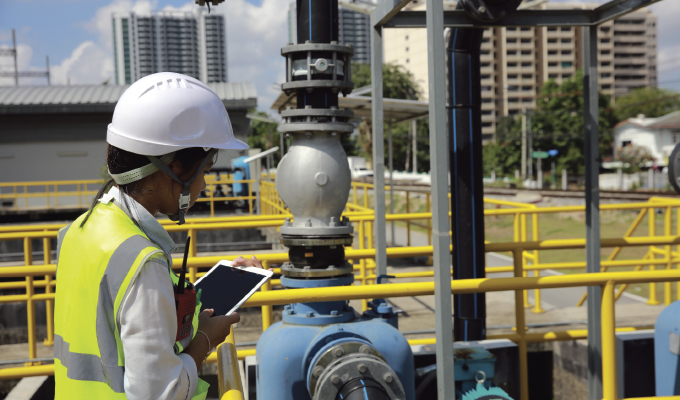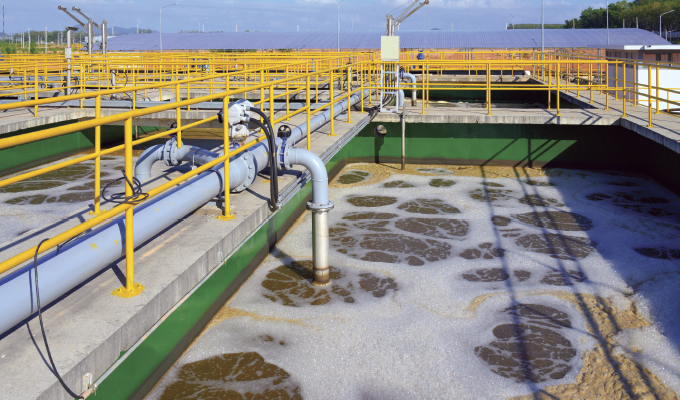In part 1 of this series, we looked at some of the inefficiencies inherent to traditional methods of tank monitoring protocols found at facilities, often necessitating sending technicians to visually assess large assets with on-site inspection. Furthermore, some of these tank site house materials hazardous to human exposure, making a remote monitoring solution desirable form a safety standpoint as well.
However, despite the technology supporting remote monitoring data being relatively simple and widely available, operators have yet to take full advantage of its potential. Below, we’ll examine some of the requirements for bringing accurate data through the gateway as well as the cost benefits remote tank monitoring can provide.
FROM THE GATEWAY TO THE DATA
Gateways for remote tank monitoring are typically powered by either mains electricity or batteries, either as a backup or to enable operations where mains power is unavailable or complicated to connect. Gateway devices typically contain a SIM card for cellular connection, a CPU and GPIO input and output ports. They also contain a cellular module and a GPS module—where required—plus an antenna to enable the connection.
Device requirements include robustness and low power consumption as well as the ability to support multiple frequency bands to maximize the number of sites in which a tank can be deployed. The gateway is then able to collect and send tank data to a central database for processing and acting upon. This typically happens via a remote tank monitoring service provider’s application that can analyze and process data from all of an organization’s tanks to perform trend and predictive analytics and to exchange data with third party applications, such as maintenance and other functions.
UNLEASH THE BUSINESS BENEFITS
Remote tank monitoring has now matured to the extent that hardware in the form of sensors and the gateway is now available for less than $100 per unit with costs for integration and software running at under one dollar per month, per unit. This makes remote tank monitoring increasingly viable for even lower value use cases. If you consider the average cost of a cargo drop is around $65, having risen substantially due to increased fuel costs, it is clear to see how rapidly remote tank monitoring solutions can generate a return on investment. The figure below details how a fuel delivery truck can optimize its route by utilizing remote tank monitoring data to understand which tanks need filling. The model suggests an increase in efficiency from 45 to 70 percent.
KEEP CRITICAL INFRASTRUCTURE SECURE
Tanks are not only fundamental to the smooth operations of numerous business processes, in many cases they are also critical infrastructure. Tanks that hold diesel to power generators at hospitals or factories are obvious examples of situations in which continuous power supply is essential but water tanks and heating fuel tanks are also critical to a wide variety of situations. Security is therefore a fundamental consideration for remote tank monitoring and an area that Quectel has focused on intently.
Quectel implements rigorous security measures to ensure the integrity of its products and services alongside customers’ privacy and data management. As a member of industry bodies including GSMA, CTIA, CTA, 5GAA, 3GPP, and GSA, Quectel actively participates in working groups to advance the IoT sector and security standards. Quectel modules conform to the network access standards of global operators and follow all the necessary network security specifications. Organizations that deploy remote tank monitoring solutions that utilize Quectel modules and antennas can therefore be assured that Quectel understands the security threats this market faces and is working continuously to mitigate these to help keep customers’ monitoring solutions secure.

CASE STUDY: KEEPING PERSONNEL AWAY FROM HAZARDS
LevelCon is a pioneer in the field of monitoring and tracking using advanced low power wide area (LPWA) networks. The company has been in the telemetry business since 2002, when it launched its first remote monitoring application using 2G and SMS, and is a full-service provider IoT company for critical data acquisition. The company focuses on providing monitoring solutions with a tracking feature and has recently introduced its StarPin product series, which utilizes the Quectel BG95-M2 module.
Starpin is a Class I Division 1, group D-certified device capable of satisfying asset monitoring and tracking use case requirements of hazardous and non-hazardous materials at any location. StarPin is completely solar powered and helps industries in reducing their carbon footprint. In addition, the product is easy to use and can work indefinitely without any need for human intervention on solar power. StarPin is capable of bi-directional communication which enables remote provisioning and remote configuration, allowing industrial organizations to configure the unit without having personnel enter a hazardous area.
StarPin can communicate with Bluetooth Low Energy (BLE) sensors with mesh capabilities. This creates a complete industry-ready sensor node capable of being deployed in any use case. Large numbers of StarPin units are deployed in use cases such as propane monitoring and hydrogen monitoring which require hazardous area Class I division 1 certifications.
Facing two challenges, in the form of GNSS implementation and NIDD connectivity, LevelCon was able to turn to Quectel for guidance and, in addition to using the Quectel BG95-M2 module for all connectivity requirements, also uses Quectel GNSS antenna solutions for StarPin. StarPin is now being deployed in India, Australia, Canada, and the United States.
CONCLUSION
The large number of remote tanks that are already deployed across the globe will benefit enormously from the addition of remote tank monitoring solutions. These will remove over- and under-supply challenges, save wasted transportation costs and time, and help to ensure the condition of tank contents is maintained effectively and safely. Connectivity powers this cost-effective sector that is characterized by a mature retro-fitting market and a newer market in which new tanks are shipped with sensors integrated.
The remote tank monitoring sector will only continue to grow, bringing greater benefits for connected tanks as more and more data is gathered and predictive analytics empowers more precise insights to enable greater optimization on deliveries.
Quectel’s passion for a smarter world drives us to accelerate IoT innovation. A highly customer-centric organization, we are a global IoT solutions provider backed by outstanding support and services. Our growing global team of 5,900 professionals sets the pace for innovation in cellular, GNSS, Wi-Fi, and Bluetooth modules as well as antennas and services. With regional offices and support across the globe, our international leadership is devoted to advancing IoT and helping build a smarter world. For more information, visit www.quectel.com.


